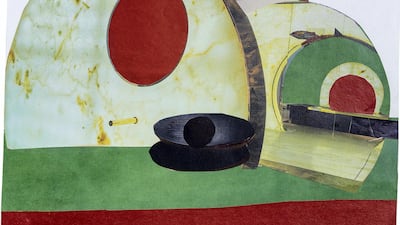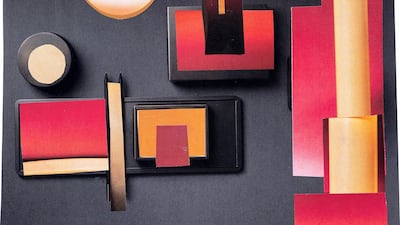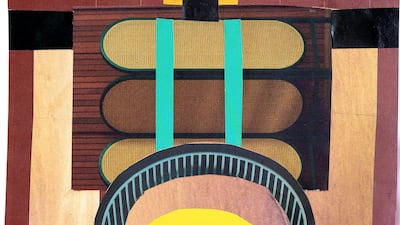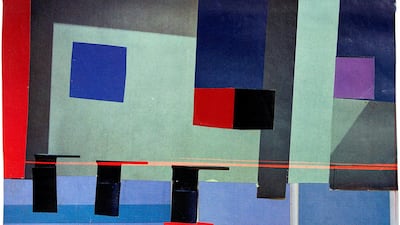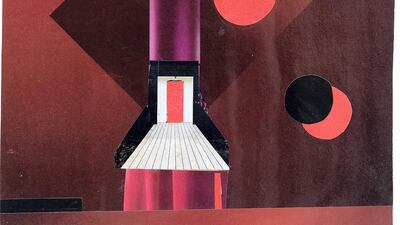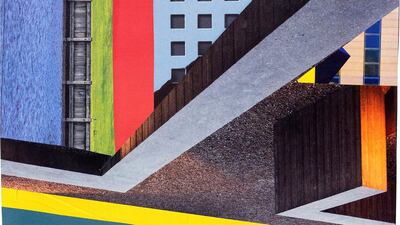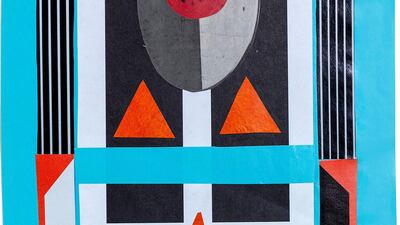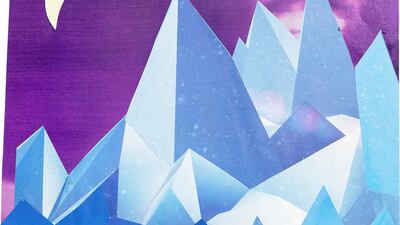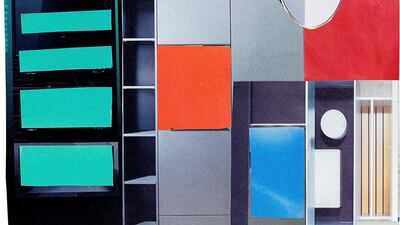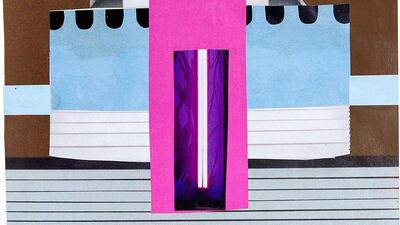In 2015, the two directors of Carbon 12, a gallery in Dubai's Alserkal Avenue, were at the Nada art fair in New York. They came across a series of small, extraordinary collages from an artist they didn't recognise. Two years later, at Documenta, they saw the same works and peered at the label: Elisabeth Wild, born Vienna, 1922.
"We know the art scene in Vienna pretty much like the back of our hands," says Kourosh Nouri. His co-director, Nadine Knotzer, is Austrian and their programme has a focus on German-speaking artists. "But we'd never heard of an Elisabeth Wild. We were amazed and thought she must be a young emerging artist. I turned to the attendant and said, 'You should pay more attention to your wall labels – there's a mistake with one of the birth years.' He said, 'No, that's right, she was born in 1922.'"
A late discovery
The art world discovered Elisabeth Wild a few years ago, uncovering a rich life story as well as an impressive body of artwork. Wild and her family fled from the Nazis in 1938, settling in Buenos Aires. In Argentina, she began making textile designs, building on art studies she completed in Vienna, and through this line of work met her husband, Swiss textile industrialist August Wild. They re-settled in Europe and she led a comfortable life, running an antique store. Then, at the age of nearly 75, she moved with her daughter Vivian Suter – also an artist, and recently divorced – to a ramshackle house in Lake Atitlan, Guatemala, an area ringed by three volcanoes and frequently flooded during storms.
The pair made artwork in relative obscurity – Suter painting and Wild making collages. Then, in 2017, their works were brought to wider attention when they were exhibited in Documenta, the art world's most esteemed exhibition held every five years in Kassel, Germany. Wild's precise, petite output held its own both spread out brightly across the wall of Kassel's neoclassical Neuegalerie, and in the Athens Conservatoire in the Greek capital – a venue that was used as a satellite for the 2017 show. That year's event also happened to include a film, Vivian's Garden by artist Rosalind Nashashibi.
Curious about the two women, Nashashibi had travelled to Lake Atitlan to document their Grey Gardens-like life. She creates a portrait of the relationship between the two that has developed in isolation, in which filial and friendship roles are easily dipped into and traded. It also portrays the particular environment of the house itself, with windows open to the green world outside, dogs criss-crossing the rooms and the comings and goings of the Mayan servants the two European women rely on.
Bringing her work to Dubai
The enthusiastic reception Wild received in Kassel was, on the one hand, a classic art-world play: curators love to recoup forgotten female artists, and this story had the added benefit of the exoticism of her evocative seclusion. But Wild is still working and – perhaps because of the pairing with Nashashibi’s film, a sensitive and full portrayal, rather than a simplistic exercise in hagiography – the inclusion of the wheelchair-bound nonagenarian felt less like tokenism and more like another episode in a long and eventful life.
In Dubai, Wild's show comprises 42 collages, all of which she made especially for the gallery. She calls them "Fantasias," and they show the influence of graphic modernism, textile design and the bright colour palette of her surroundings in Guatemala. Some resemble kaleidoscopic compositions, with floating orbs against jagged angles; others are almost Constructivist-evocations of cityscapes. They are, above all, attentive to colour, and are formed out of advertisements from high-end magazines that Wild collects.
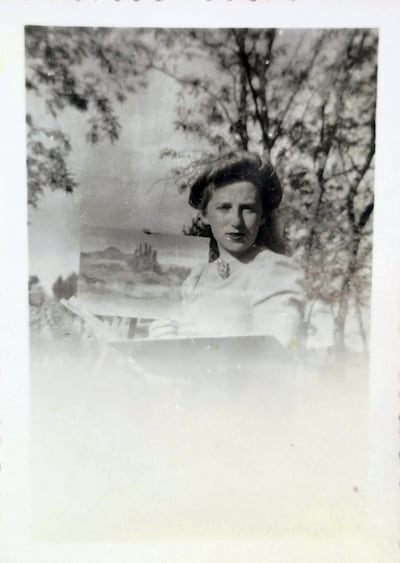
"She chooses the best quailty," Nouri says, "like Vogue and Artforum." She cuts snippets to avoid any images of the advertised object or the slogan and consequently all the viewer sees is glossily produced colour: an image designed to effect desire for a commodity is transformed into an object of beauty in itself.
They are arranged in Carbon 12 against a background of a muted, almost millennial pink – a directive from the artist who, Nouri says, sent them a pink cutting from a magazine in the post and asked them to match the paint. "It was so analogue!" he laughs. "And we thought she was emerging!"
One might say Carbon 12's commercial space has been Wild-ed: gone is the white cube of art-world commerce, and in its place a more alluring, tougher colour of contemplation.
Elisabeth Wild’s Fantasias is at Carbon 12, in Alserkal Avenue, Dubai, until March 10
